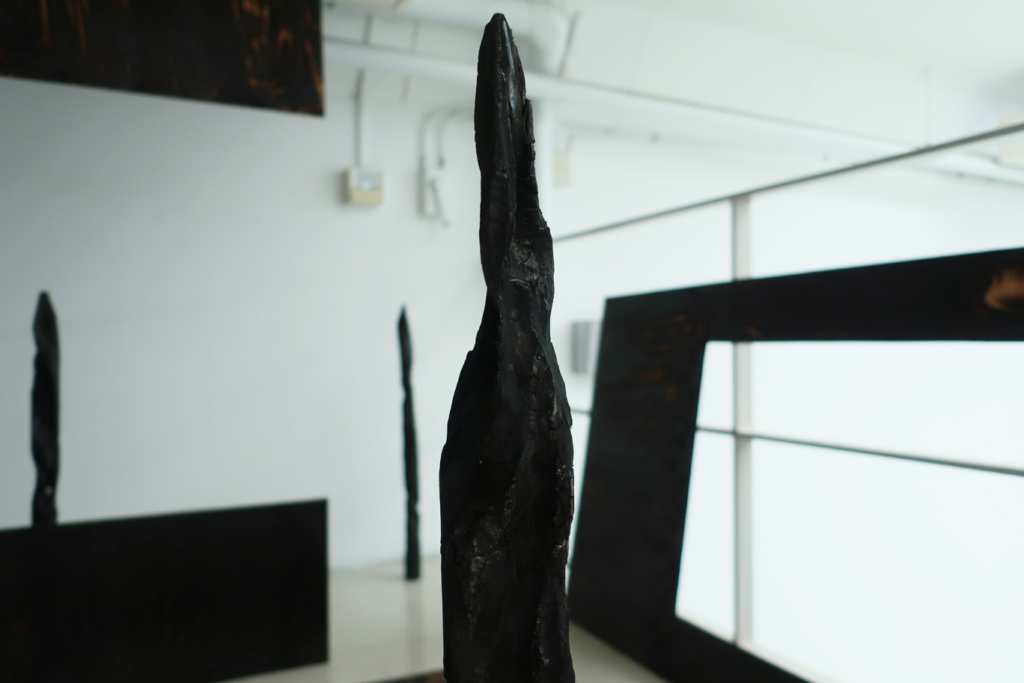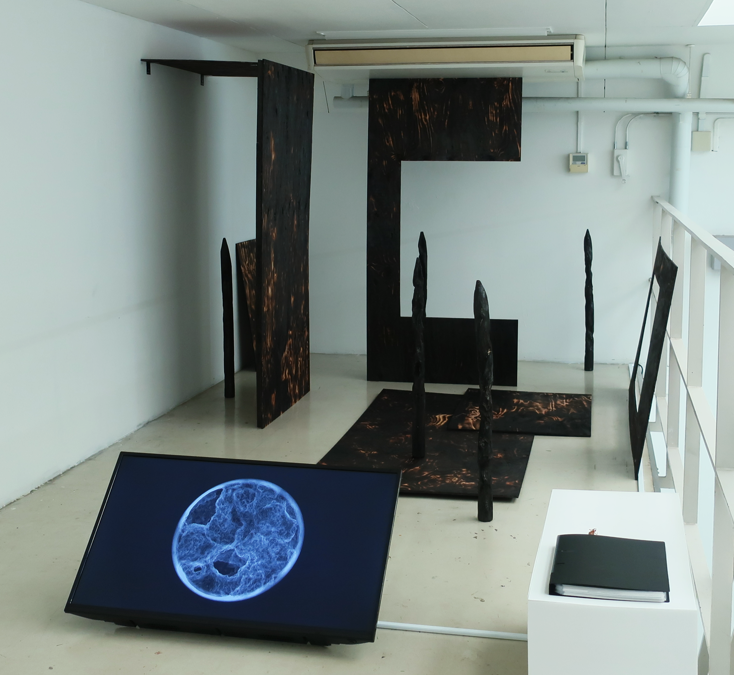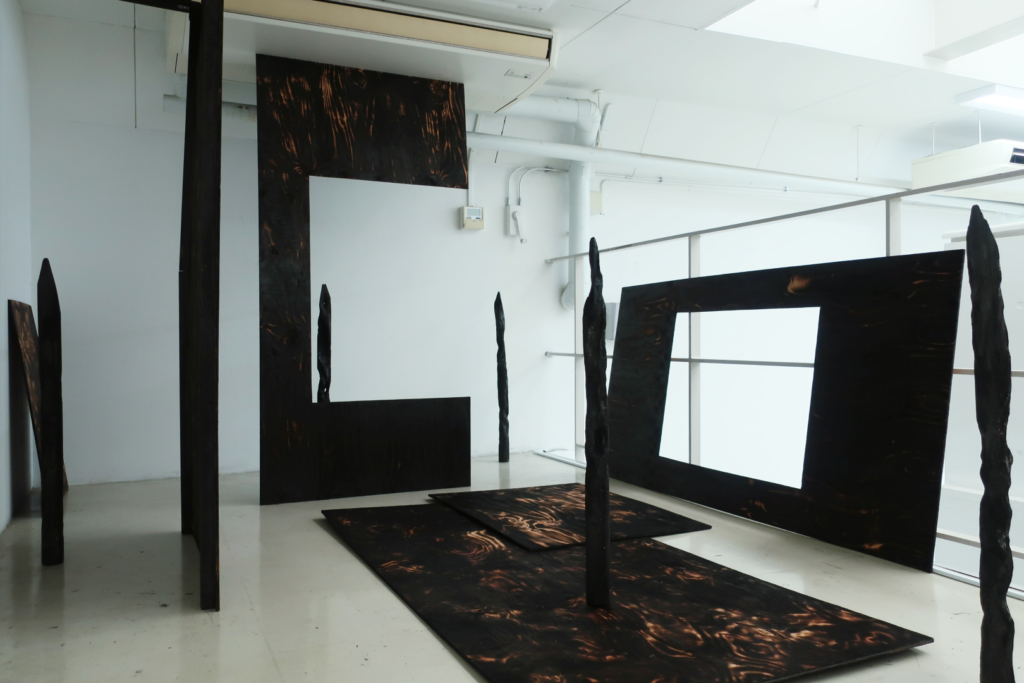The catalyst of this project was the death of my grandmother.
The body that had existed before my eyes was burnt and only the bones remained.
After death, how does a person’s weight become so much lighter? — This sensation was the first clue.
On a wooden stake, undulating bumps were added.
When I burnt it, it turned to charcoal.
However, I did not turn the wood into completely burnt white charcoal. Only the surface became charcoal while the inside was still living wood — creating a disguise of death. Nevertheless, its mass is preserved. The shape is held firm, and in contrast to the violent transformation in the vortex of combustion, it appears to have been frozen in quiet moments of time.
In contrast to the frozen charcoal sculpture, the image of a cell is juxtaposed with an image of a cell drawn by a programme that continues to generate itlsef semi-permanently until it is stopped.
Randomly generated noise patterns are superimposed on top of each other, and the landscape is cut out by a circle that rhythmically undergoes repetitive contractions and expansions. It resembles the movement of a cell just before it struggles to divide.
The mass of the work is as close to zero as human beings can directly observe, but the biological movements are repeated.
“Code of Life and Death” is a device for reversing the mass of life and death and their behaviour —
reversing the staticity and the dynamicity.
The series name “Animortem of Pictorial Form” had not been invented at the time of “Code of Life and Death”. The terms ‘pictorial form’, which appeared in “III. Logical Picture of Deletion”, and ‘Animortem’, capture the sense of reality discovered in “Code of Life and Death”.
In this sense, the concept did not precede the series. Language was something that lent itself to analysis. The bottom, which I just reached out and touched as I waved it around, was the boundary between life and death. The language activity helped me to analyse the act of touching the bottom.



